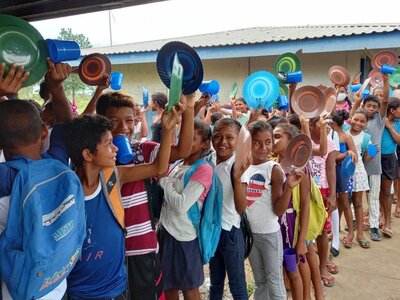Nicaragua
- 24.9%
- of the population lives in poverty
- 40%
- of the population live in rural areas
- 7 million
- population
Nicaragua is a low-income, food-deficit country, and among the poorest in Latin America. According to the World Risk Report, it is one of the countries most affected by extreme weather events: droughts, hurricanes, tropical storms and floods, among others.
These events have a negative impact on food systems, putting at risk the food and nutritional security of the most vulnerable people, especially in the Dry Corridor area. This includes smallholder farmers who produce 90 percent of the country's basic grains.
The World Food Programme (WFP) supports initiatives to promote food security, nutrition, livelihood restoration and farmers' access to sustainable markets.
WFP also works with national institutions to strengthen disaster risk management, social protection systems, and food systems.
What the World Food Programme is doing in Nicaragua
-
Emergency preparedness and response
-
In collaboration with national authorities, WFP strengthens integrated disaster risk management, early warning and response to emergencies. As an immediate response, WFP can make available ready-to-eat food kits. WFP also reinforces the national school feeding programme by delivering a second hot meal to children in schools and/or take-home rations to their families, reducing the economic burden faced during a crisis.
-
School meals
-
Smallholder farmers
-
Service provision
Nicaragua news releases
Go to pagePartners and Donors
Find out more about the state of food security in Nicaragua
Visit the food security analysis pageOperations in Nicaragua
Contacts
Office
Edificio COBIRSA, 3er. piso, kilómetro 6 1/2 Carretera a Masaya, contiguo a Edificio Claro
Nicaragua






